Inspired by a classic roadster of the 1950s, the BMW Z8 stands out from the retro-design pack: it is not simply evocative, it is visually elegant in a modern way. The design has continuity from the sleek nose to the truncated tail and avoids unnecessary embellishment.
The inspiration for the Z8 was the BMW 507 roadster, of interest both because of its low production -- just 253 were built in 1956-1959 -- and its V8 engine, a rarity in a European car of that period.
BMW won't say how many Z8s it will produce; 1,600 have been sold in the United States, out of 4,242 worldwide, since the car went on sale here two years ago.
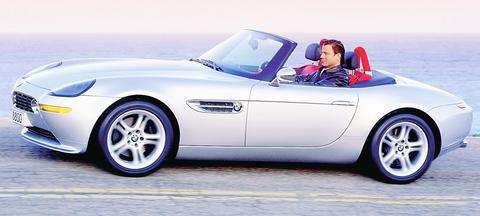
PHOTO: NY TIMES
The Z8's exceptionally rigid aluminum body and chassis are shared with no other car. The 5-liter all-aluminum V8 engine (four camshafts, 394HP) is shared with the high-performance M5 sedan, and it is coupled to a six-speed manual transmission.
As you would expect from a car with a sticker price of US$130,645, the list of standard features is long: front and side air bags, electronic stability control, run-flat tires that eliminate the need for a spare, a drive-by-wire electronic throttle with settings for "comfort" and "sport"; stylish and effective xenon headlamps and neon taillights.
My test car, in "titanium silver metallic" with a red leather interior, was superbly finished; even the underside of the trunk lid was fully carpeted. The trunk was adequate, with space for a pair of golf bags.
Even better than the Z8's striking appearance is the driving experience.
The long hood and burbling dual exhaust evoke memories of a wooden speedboat powered by an inboard V8. Acceleration is effortless, and the 368 pounds-feet of torque lets an enthusiastic driver spin the tires in any of the first three gears.
In a week of driving through the urban sprawl around Phoenix, plus two-lane roads that wind through towns like Carefree, Sedona and Strawberry, the Z8 was always a pleasure. Clearly in its element approaching triple-digit speeds, the car attacked each corner eagerly, almost as if waiting for the driver to go faster. Even when pushed, the Z8 never lost its composure.
The gearbox shifts smoothly, although sixth gear is an ultra high overdrive that is truly useful only above 130kph.
The dashboard is intriguing if not entirely successful. Analog gauges, with white retro-look markings on a black background, are mounted in the center -- an inconvenient but stylish placement that recalls the Ferrari Lusso of the early 1960s, a classic now worth more than US$125,000.
The space in front of the driver, where the instruments would normally be, is disconcertingly bare.
And I could only judge the 250-watt, 10-speaker Harman/Kardon stereo a total failure, producing the worst sound I have ever experienced in a new car. The bass is badly overboosted even at normal settings.
When BMW introduced the Z8 in Frankfurt in 1999, it suggested that the car would be a future collectible. Indeed, a few eager collectors paid US$250,000, nearly twice the list price, for some of the first cars that reached the US a year later.
But street prices have come down considerably, and new cars are now being offered at sticker price.
Though mostly hand-built, the Z8 will never be as desirable to collectors as the 507.
Its production numbers are too high and its mechanical components too common.
Since the Z8 aspires to be an exotic car, one can overlook things like its plastic rear window. In contrast, the Mercedes SL has similar performance with more everyday functionality.
While the Z8 has style and sensuality, but the Mercedes-Benz 500SL, costing 30 percent less at about US$100,000, is clearly the better value.
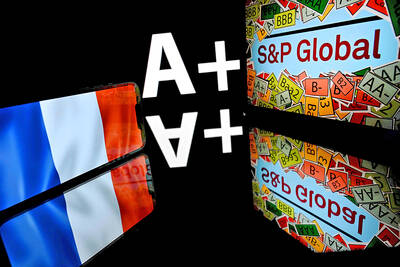
France cannot afford to ignore the third credit-rating reduction in less than a year, French Minister of Finance Roland Lescure said. “Three agencies have downgraded us and we can’t ignore this cloud,” he told Franceinfo on Saturday, speaking just hours after S&P lowered his country’s credit rating to “A+” from “AA-” in an unscheduled move. “Fundamentally, it’s an additional cloud to a weather forecast that was already pretty gray. It’s a call for lucidity and responsibility,” he said, adding that this is “a call to be serious.” The credit assessor’s move means France has lost its double-A rating at two of the
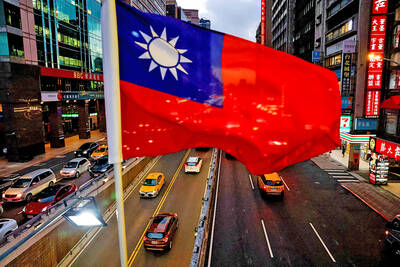
AI BOOST: Although Taiwan’s reliance on Chinese rare earth elements is limited, it could face indirect impacts from supply issues and price volatility, an economist said DBS Bank Ltd (星展銀行) has sharply raised its forecast for Taiwan’s economic growth this year to 5.6 percent, citing stronger-than-expected exports and investment linked to artificial intelligence (AI), as it said that the current momentum could peak soon. The acceleration of the global AI race has fueled a surge in Taiwan’s AI-related capital spending and exports of information and communications technology (ICT) products, which have been key drivers of growth this year. “We have revised our GDP forecast for Taiwan upward to 5.6 percent from 4 percent, an upgrade that mainly reflects stronger-than-expected AI-related exports and investment in the third
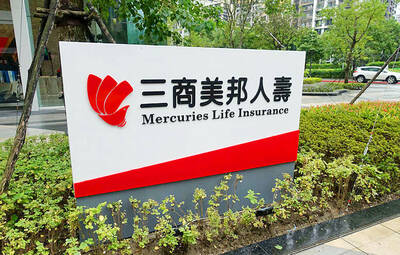
Mercuries Life Insurance Co (三商美邦人壽) shares surged to a seven-month high this week after local media reported that E.Sun Financial Holding Co (玉山金控) had outbid CTBC Financial Holding Co (中信金控) in the financially strained insurer’s ongoing sale process. Shares of the mid-sized life insurer climbed 5.8 percent this week to NT$6.72, extending a nearly 18 percent rally over the past month, as investors bet on the likelihood of an impending takeover. The final round of bidding closed on Thursday, marking a critical step in the 32-year-old insurer’s search for a buyer after years of struggling to meet capital adequacy requirements. Local media reports
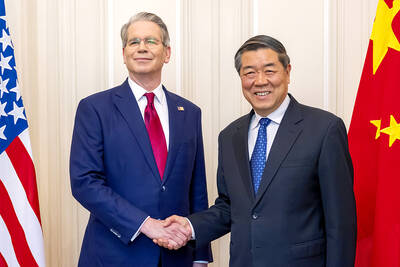
RARE EARTHS: The call between the US Treasury Secretary and his Chinese counterpart came as Washington sought to rally G7 partners in response to China’s export controls China and the US on Saturday agreed to conduct another round of trade negotiations in the coming week, as the world’s two biggest economies seek to avoid another damaging tit-for-tat tariff battle. Beijing last week announced sweeping controls on the critical rare earths industry, prompting US President Donald Trump to threaten 100 percent tariffs on imports from China in retaliation. Trump had also threatened to cancel his expected meeting with Chinese President Xi Jinping (習近平) in South Korea later this month on the sidelines of the APEC summit. In the latest indication of efforts to resolve their dispute, Chinese state media reported that